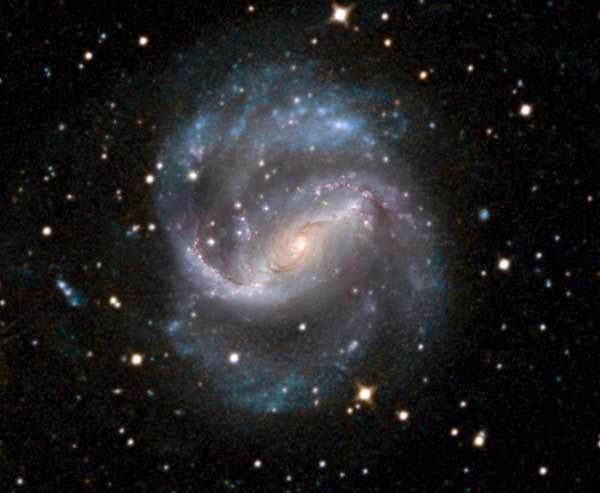Right ascension 04 45 42 Redshift 1331 ± 3 km/s Apparent size (V) 6′.6 × 5′.5 | Declination −59° 14′ 56″ Type (R')SB(r)bc Magnitude 10.3 Apparent magnitude (V) 10.3 | |
 | ||
Similar NGC 1566, NGC 1559, NGC 1300, NGC 1808, NGC 1792 | ||
Ngc 1672 barred spiral galaxy zoom into
NGC 1672 is a barred spiral galaxy located in the constellation Dorado. It was originally thought to be a member of the Dorado Group, however, this membership was later rejected. NGC 1672 has a large bar which is estimated to measure around 20 kpc. It has very strong radio emissions emanating from its nucleus, bar, and the inner portion of the spiral arm region. The nucleus is Seyfert type 2 and is engulfed by a starburst region. The strongest polarized emissions come from the northeastern region which is upstream from its dust lanes. Magnetic field lines are at large angles with respect to the bar and turn smoothly to the center.
Contents
- Ngc 1672 barred spiral galaxy zoom into
- Ngc 1672 barred spiral galaxy
- General structure
- Nucleus
- References
Ngc 1672 barred spiral galaxy
General structure
The center of the galaxy contains a high surface brightness bar, and four filament-like spiral arms extend outward from the ends of this bar. The spiral arms are asymmetric; one of the arms in the northeast part of the disk is significantly brighter than its counterpart on the other side. The spiral arms also contain numerous star formation regions, some of which may be as large as 4′′.
Nucleus
The classification of the nucleus of NGC 1672 is uncertain. Most galaxies may be classified by their spectra as having one of three different types of nuclei:
NGC 1672, however, is one of several nearby galaxies that does not fit into this classification scheme, as its spectrum appears intermediary between these three classes of objects. It may in fact contain both nuclear star formation regions and an AGN. In some wave bands (such as in ultraviolet light), the star formation regions are the primary source of emission.
